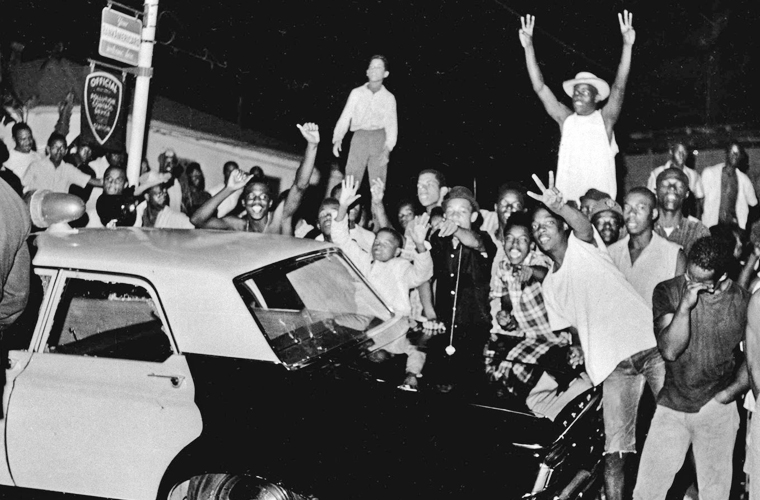In the summer of 1965, the Watts neighborhood of Los Angeles erupted in violence. What began as a routine traffic stop quickly escalated into six days of rioting, looting, and arson that left 34 people dead, over 1,000 injured, and more than 3,000 arrested. The Watts Riots, as they would come to be known, were a stark reminder of the deep-seated racial tensions and economic inequalities that plagued American society in the 1960s.
The Watts neighborhood was predominantly African American, and many residents lived in poverty. Unemployment was high, schools were underfunded, and police brutality was a constant threat. On August 11, 1965, Marquette Frye, a young black man, was pulled over by white police officers for suspicion of drunk driving. Frye’s mother and brother were also in the car. A crowd gathered as the officers attempted to arrest Frye, and tensions quickly escalated. Rumors spread that the police had used excessive force and had beaten Frye and his family members.
The unrest that followed was not limited to the Watts neighborhood. Similar riots broke out in other cities across the country, including Detroit and Newark. The Civil Rights Movement was in full swing, and many African Americans were frustrated with the slow pace of progress. The Watts Riots were a violent expression of this frustration. The riots were marked by widespread looting and arson. Buildings were set on fire, stores were ransacked, and entire city blocks were destroyed. The National Guard was called in to restore order, but their presence only seemed to exacerbate the situation. Many residents felt that they were under siege by both the police and the military.
In the aftermath of the riots, there was a sense of shock and disbelief. How could something like this happen in America? The riots were a wake-up call for many Americans, who realized that the country had a long way to go in terms of racial justice and equality. The Kerner Commission, appointed by President Lyndon B. Johnson to investigate the riots, concluded that they were caused by “white racism” and “black frustration.” The Watts Riots had a profound impact on American society. They brought issues of race and poverty to the forefront of national consciousness and helped to galvanize support for the Civil Rights Movement. They also highlighted the need for greater investment in urban communities and for more effective strategies to address poverty and inequality.
Today, the Watts neighborhood is still struggling with many of the same issues that led to the riots over 50 years ago. Poverty and unemployment remain high, schools are underfunded, and police-community relations are strained. However, there are also signs of hope. Community leaders are working to revitalize the area and to address the root causes of poverty and inequality. The Watts Riots may have been a dark chapter in American history, but they also serve as a reminder of the importance of continuing to work towards a more just and equitable society.

